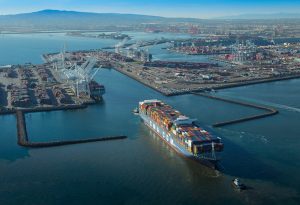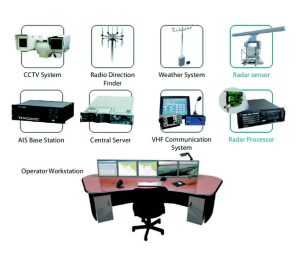Vessel Traffic Services (VTS) are an integral part of modern maritime navigation, playing a crucial role in ensuring the safety, efficiency, and environmental protection of vessel movements within specific coastal areas, ports, and other waterways. Similar to air traffic control in aviation, VTS systems provide navigational assistance, traffic management, and monitoring of vessels, contributing significantly to the reduction of accidents and ensuring the smooth flow of maritime traffic.

Purpose and Importance of VTS
The primary goal of VTS is to ensure safe and efficient navigation in congested or potentially hazardous maritime areas. With the increase in global trade and the resulting surge in maritime traffic, the risk of collisions, groundings, and other incidents has risen. VTS systems help mitigate these risks by providing real-time information and advice to vessels operating within their service areas.
Key objectives of VTS include:
- Safety of Navigation: By monitoring vessel movements, VTS operators can issue warnings or instructions to prevent collisions, groundings, or other dangerous situations.
- Efficient Traffic Management: VTS ensures that maritime traffic flows smoothly, reducing delays and optimizing port operations.
- Environmental Protection: In environmentally sensitive areas, such as near reefs or in narrow straits, VTS systems help prevent incidents that could lead to pollution or other ecological damage.
- Incident Response: VTS plays a critical role in emergency situations by coordinating search and rescue operations and providing assistance to distressed vessels.
How Vessel Traffic Services Work
VTS centers use advanced technology and skilled personnel to monitor and manage vessel traffic in their area of responsibility. Their operations are based on three key functions: Information Service (INS), Traffic Organization Service (TOS), and Navigational Assistance Service (NAS).
- Information Service (INS): VTS provides ships with real-time information on weather conditions, traffic density, potential hazards, and navigational warnings. This allows shipmasters to make informed decisions while navigating in controlled areas.
- Traffic Organization Service (TOS): This service involves managing the movement of ships in high-traffic areas, ensuring that vessels follow safe and efficient routes to avoid bottlenecks and minimize delays. In some cases, VTS operators may impose restrictions on vessel movement, such as reducing speed limits or coordinating arrival and departure times at ports.
- Navigational Assistance Service (NAS): In situations where vessels encounter difficulties, such as poor visibility or equipment malfunctions, VTS provides direct navigational assistance to help them safely reach their destination. This assistance is especially critical in congested, narrow, or high-risk areas.
Key Components of a VTS System
To carry out its functions, a VTS center relies on a combination of technology, skilled personnel, and communications infrastructure. The main components include:
- Radar Systems: Radars are used to detect and track vessel movements within the VTS coverage area. These systems allow VTS operators to monitor the position, speed, and course of ships in real-time.
- Automatic Identification System (AIS): AIS is a tracking system that provides detailed information about vessels, including their identity, position, speed, and heading. Vessels equipped with AIS continuously transmit this information, which can be received by VTS stations to monitor traffic.
- Radio Communication: VTS centers use Very High Frequency (VHF) radio channels to communicate with vessels. This allows operators to provide navigational advice, issue instructions, and respond to inquiries from ships in their area.
- Surveillance Cameras: In high-traffic or critical areas, VTS centers may use closed-circuit television (CCTV) systems to visually monitor vessel movements, particularly in ports and narrow waterways.
- Electronic Chart Display and Information Systems (ECDIS): ECDIS is used by both vessels and VTS operators to monitor traffic in conjunction with up-to-date digital nautical charts.
Types of VTS
VTS systems are tailored to meet the specific needs of the area they cover. There are generally three types of VTS:
- Port VTS: Primarily focused on the management of vessel traffic in and around ports. These systems coordinate safe berthing, manage vessel arrivals and departures, and control port traffic density.
- Coastal VTS: Designed to cover larger coastal regions, these systems monitor shipping lanes, support safe navigation in coastal waters, and protect environmentally sensitive areas.
- River VTS: In some countries, VTS systems manage vessel traffic along rivers and inland waterways, ensuring the safe passage of cargo and passenger vessels through congested or narrow channels.
The Role of VTS Operators
VTS operators are highly trained maritime professionals responsible for ensuring the safe and efficient movement of vessels within their jurisdiction. Their responsibilities include:
- Monitoring vessel movements via radar, AIS, and CCTV systems.
- Providing navigational advice and information to vessels.
- Coordinating ship movements to avoid collisions or congestion.
- Responding to emergencies and supporting search and rescue operations.
- Issuing navigational warnings about hazards, such as severe weather or restricted zones.
VTS operators work closely with port authorities, pilots, and maritime agencies to ensure that maritime operations run smoothly.
Global Standards and Regulation
Vessel Traffic Services are regulated by international standards set by the International Maritime Organization (IMO) under the SOLAS (Safety of Life at Sea) Convention. These regulations provide guidelines for the establishment, operation, and management of VTS systems to ensure consistent and high-quality services globally.
In addition, the International Association of Marine Aids to Navigation and Lighthouse Authorities (IALA) develops recommendations and best practices for the implementation and operation of VTS. IALA sets the standards for the training and certification of VTS operators, ensuring that they are equipped to handle the complex responsibilities of traffic management.
In short, Vessel Traffic Services are an indispensable part of modern maritime operations, significantly enhancing the safety, efficiency, and environmental protection of vessel movements. As global maritime traffic continues to grow, the role of VTS will only become more important, ensuring that ships can navigate safely and efficiently through busy and high-risk areas.
Through advanced technology, skilled personnel, and adherence to international regulations, VTS plays a pivotal role in preventing accidents, optimizing port and coastal traffic, and safeguarding the marine environment.



